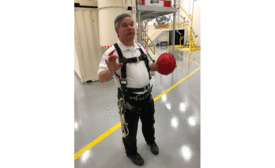Home » behavior based safety
Articles Tagged with ''behavior based safety''
Closing Time
Asking questions leads to improved worker performance
T.H.A.N.K.S. for the feedback
February 3, 2020
Brought to you by ORCHSE Strategies, LLC and Muschara Error Management Consulting
Foundations of Human & Organizational Performance
2-DAY TRAINING COURSE coming in January!!
December 12, 2019
Dig deeper into system factors behind at-risk actions
Discuss intentions,Not behaviors
November 2, 2019
Become a Leader in Safety Culture
Build your knowledge with ISHN, covering key safety, health and industrial hygiene news, products, and trends.
JOIN TODAYCopyright ©2025. All Rights Reserved BNP Media.
Design, CMS, Hosting & Web Development :: ePublishing











